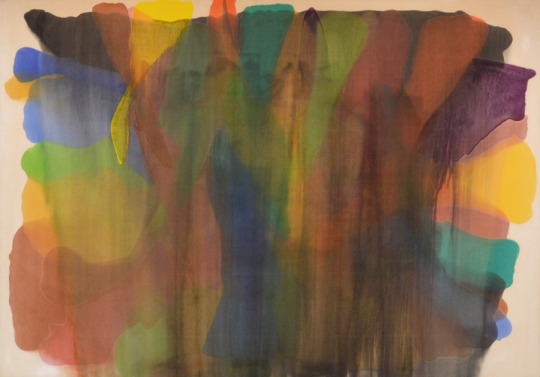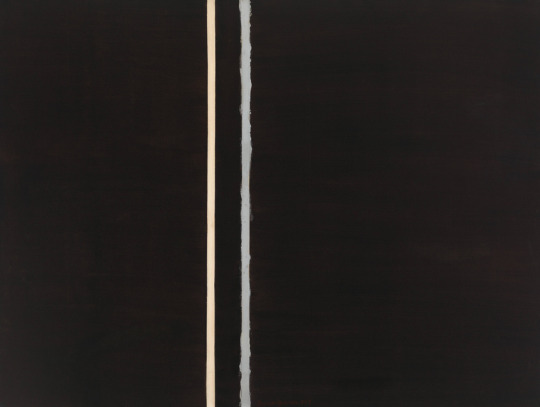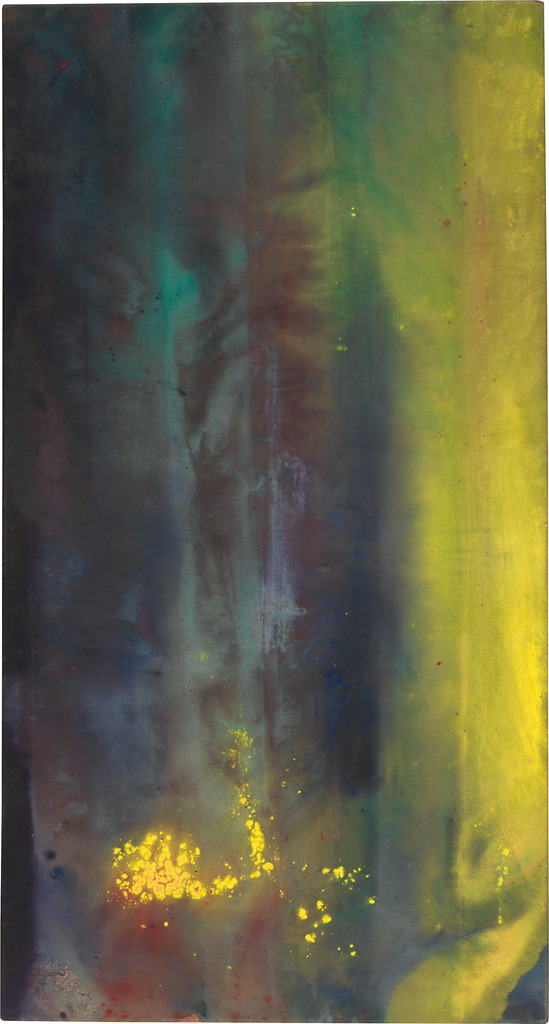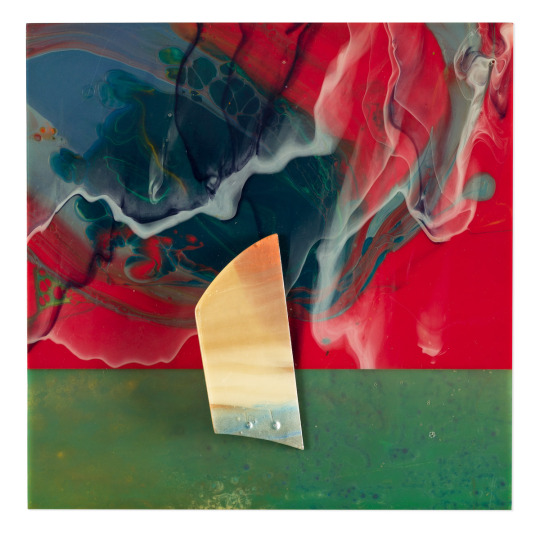#abstractionist
Text

ARTIST SHOUT-OUT #493
Monday, October 2, 2023
"Hemispheres Project" by Alexis Paredes
SOCIAL MEDIA
ArtStation Post
All Their Links
Instagram
Threads
**Don’t forget to give Alexis Paredes a follow!**
~~~~~~~~~~~~~~~~~~~~~~~~~~~~~~~~~~~~~~~~~~~~~~~~
The Artist Shout-Outs are given to human artists to combat AI art theft.
For more details, and to view previous ones, click here!
This shout-out choice was inspired by the Oxford English Dictionary's Word of the Day: abstractionist, to see the definition, click here!
See the piece on ArtStation here!
See the original Artist Shout-Out post to Instagram here!
See where else the Artist Shout-Out has spread here!
View On WordPress
#3dartist#3dcharacterartist#abstract#abstractionist#alexis3dart#alexisparedes#Art#artist#artistappreciation#artistexposure#artistoftheday#artistshoutout#artistshoutouts#artistshowing#artistsupport#artwork#ASO#becomempowered#bempowering#characterdesigner#createdontscrape#digital3d#digitalsculptor#humanartist#MonriaTitans#monriatitanswgs#noai#showanartistlove#supportanartist#WGS
0 notes
Photo

Pre-breakfast morning workout. Fine-brush work. Choosing the colors with nonchalant confidence of the fellas like gaugin, Van Gogh, though I started with in the this painting with a vermeer like seriousness when choosing colors. I know, they too bright for the natural decency from the old Dutch masters. Anyway my eggs, and my toastie breads are ready. Light effects with green, turquoise it is, till lunch. #artistlife #artistprebreakfast #Artistbreakfast #kitchenplenaire #Paintinglight #Mutigefarben #bravecolorchoice #colorchoice #farbwahl #farben #farbsüchtig #farbensüchtig #lovingcolors #colorlover #SEAK #ClausWinkler #SEAKClausWinkler #stylewriting #Letterstyle #abstractionist #abstractartist #abstractpainter #abstraction #abstractpainting (at Nordrhein-Westfalen, Germany) https://www.instagram.com/p/CgTxy6MIy7-/?igshid=NGJjMDIxMWI=
#artistlife#artistprebreakfast#artistbreakfast#kitchenplenaire#paintinglight#mutigefarben#bravecolorchoice#colorchoice#farbwahl#farben#farbsüchtig#farbensüchtig#lovingcolors#colorlover#seak#clauswinkler#seakclauswinkler#stylewriting#letterstyle#abstractionist#abstractartist#abstractpainter#abstraction#abstractpainting
0 notes
Note
Which Rothko is your icon, if you don't mind me asking? I dig it heavy
Thanks! Though it's actually The Swan no. 17 by Hilma Af Klint, 1914-15. She was a true visionary, but not internationally known until the 1980s and criminally underrated until recent years.

My phone theme background is Kaf by post painterly abstractionist Morris Louis, 1959-1960.

My desktop theme background is The Promise by Barnett Newman, 1949.

Despite my URL namesake, I opted not to use Rothko paintings for my profile picture or themes because they don't work well for that purpose. All of these paintings are huge in real life, but I find the scale is particularly important for Rothko.
167 notes
·
View notes
Text
so i know i said i would work on the vampire au… and i DID, a bit, but then i blacked out and now i’m almost 3k into an artists!landoscar au where oscar’s a neoclassical-style realism portraitist and lando’s a gestural abstractionist and they’re sharing an apartment + studio….. oops?
#i’m calling it muse <3#technically i started it a couple weeks ago and i put it on one of my “make me work” polls#BUT that was when it was just like a collection of bullet points in my art history notebook and now it’s like a CONCEPT#landoscar#landoscar fic#lando norris#oscar piastri#f1#f1 fic
21 notes
·
View notes
Note
Wait wait wait sir sir I got a question
does au Crowley have a nice singing voice.
IMAGINE LIKE. THE POSSIBILITIES. Chat makes him sing a song bc someone donated a very nice amount so he does a little “thank you *name* for this weirdly nice donation” tiny sing song and it’s actually good??? So people try to get Crowley to sing more idk-
HMMM DOES HE?? i try picturing him singing and all i can hear is the apology song SO–
honestly somethin about crowley screams Bad Singer to me. but in a really wonderful, uniquely appealing way. hear me out:
we know he's got this vivid imagination, so i feel like anything he's creatively good at would be in a unique, creative, unorthodox way. like, as an artist, he wouldn't be a realistic renaissance painter, but a push-the-bounds cubist or abstractionist. in architecture, we think of him as brutalist, rather than something with a classic appeal like baroque or even standard minimalism. he's not appealing. but he's revolutionary.
so, with music, he wouldn't sound pretty, can't sing a smooth run or even have an impressive range. but he would have lungs for days and you'd know his voice instantly. i'm talkin cage the elephant, alt j, the vaccines, fucking menomena quality. he doesn't sound pretty but he sounds otherworldly, and he can't sing you to sleep but he'd change whatever genre he tipped his toe in forever.
SOOOO yeah. i think he'd have a shit voice. and it would fucking rock
#also not me literally growing a beard and having he/him pronouns in my bio and still giddy when strangers call me sir#i mean *coughs and lowers voice* 𝓱𝓮𝔂#good omens#ineffable streamers#ask a rat
49 notes
·
View notes
Text




Sam Gilliam (1933 – 2022) was an American colour field painter and lyrical abstractionist. Gilliam was associated with the Washington Color School, a group of Washington, D.C.-area artists that developed in the 1950s and 1960s.
He worked on stretched, draped and wrapped canvas, and added sculptural 3D elements. He was recognized as the first artist to introduce the idea of a draped, painted canvas hanging without stretcher bars around 1965. This was a major contribution to the Colour Field School and has had a lasting impact on the contemporary art canon. Arne Glimcher, Gilliam's art dealer at Pace Gallery, wrote following his death that "His experiments with color and surface are right up there with the achievements of Rothko and Pollock."
In his later work, Gilliam worked with polypropylene, computer-generated imaging, metallic and iridescent acrylics, handmade paper, aluminum, steel, plywood, and plastic.
53 notes
·
View notes
Text

Ter-Gevondyan T.R. "Conversation" 1962. GZ23 Cardboard, tempera.
Tamara Rubenovna Ter-Gevondyan
(1908-2000)
Professional painter, received higher art education in Vkhutemas-Vkhutein, studied with Lev Bruni and Konstantin Istomin. Since the 1930s, she has worked as an artist in the field of animation and television cinema, and also acted as a theorist (co-author of several books and articles devoted to the problems of visual solution of the film). Ter-Gevondyan worked as a production designer on the set of G. Shengelia, M. Kalatozov, the most independent directors of that time. In 1958, she came to Elia Belyutin's New Reality studio. Together with the New Reality studio, it passed all the milestones of its development, ban and relocation, did not miss a single exhibition in Abramtsevo from 1964 to 1992.
Participant of the I exhibition of Russian abstractionists - Taganskaya ( 1962 ) and the first avant-garde exhibition in the Manege ( 12.1962).
Art Molotov
10 notes
·
View notes
Photo

Michel Seuphor, Futurists, Abstractionists, Dadaists: the Forerunners of the Avant-Garde, vol. I, (illustrated book with nineteen etchings (three with drypoint, two with aquatint, and one with aquatint and embossing) and one engraving), Galleria Schwarz, Milano, 1961-1962, published 1962, Edition of 60 [MoMA, New York, NY. © ARS, New York / ADAGP]. Feat.: Josef Albers, Alexander Archipenko, Carl Buchheister, Serge Charchoune, Sonia Delaunay-Terk, Farfa, Jean Fautrier, Natalia Goncharova, Raoul Hausmann, Marcel Janco, Joseph Lacasse, Mikhail Larionov, Stanton Macdonald-Wright, Alberto Magnelli, Emilio Pettoruti, Alfred Reth, Hans Richter, Victor Servranckx, Gino Severini, Georges Vantongerloo
#graphic design#art#drawing#drypoint#aquatint#engraving#michel seuphor#galleria schwarz#edizioni galleria schwarz#moma#the museum of modern art#1960s
54 notes
·
View notes
Text
All I’ll say as someone with legitimacy in this one particular area is that the reactionary swathe that comes around every few years re: modern art (a lot of what’s being referred to as abstraction is not, as such) is highly predictable and people who subscribe to it know nothing about the influence war and conflict had on those artists. I can talk about some big ones; Rothko made color fields meant to be respites from the horror of reality, made large so you could stand in front of them and “enter” the painting. Mondrian was trying to arrange the postwar world into less chaotic patterns with geometry. Malevich truly believed that representational, academic art could be completely overhauled so that art could be accessed by everyone; he was trying to bring about a revolutionary future. And Pollock and other abstract expressionists were recognized for their potential to advance chauvinistic American power abroad. Whether you like it or not modern art is a force. The slightest bit of curiosity could prove this to literally anybody, but you don’t actually care about art or what it tells us about its place and time or what it does for people. But go look at an Elaine de Kooning or a Vasiliy Kandinsky (a couple of actual abstractionists) - really stand and look at it for a few minutes, quiet things around you - and recognize what you feel when you see the brushstrokes. Don’t read about it, you don’t have to worry about the actual academics or context of it, just try to understand where the artist was coming from. I bet you’ll understand more than you think. Art is a communication, after all. Silo yourself in with the painter. Give yourself a chance.
8 notes
·
View notes
Text
Abstractionist
————————
I am a pretentious artist
I see in simple shapes masquerading as thoughts
painting the bare minimum number of strokes
never truly observing the scenes I paint
as if noticing this, my brother asked me one day
If I were to paint happy, what would I paint?
I told him happiness to me is water.
I think I said water because water is everywhere
maybe he didn’t mean to but,
I couldn’t help but think, and even later: realize
happiness, like many things, is an image I’ve seen
but never watched it long enough to paint it well
4 notes
·
View notes
Text
Episode where a local douchey art critic claims to be a huge fan of Charlies art and talks endlessly about its potential to be the next big abstractionist movement. And Charlie gets so excited abt it and the Gang supports him bc they love him they want a piece of the action.
But then one day the art guy comes in and shows Charlie some new images that he generated by putting Charlies art through an AI image generator. And he expects Charlie to think it's great but Charlie is so upset that a robot stole his art that he has a lunatic-attack and shuts down and just blacks out and--.,. When he wakes up, the Gang is helping to clean the blood of the art critic off of his clothes and he is never seen or heard from again 💖💖💖💖💖
11 notes
·
View notes
Note
andrea dworkin is a thousand times more straightforward and intellectually honest than judith butler (an abstractionist) could ever dream to be
Neither woman is immune to critique of their theory (as no one should be) but if you’re sending this as an excuse to be transphobic, you should really cite someone other than Andrea. Because if that is your goal then you’ve clearly not read enough of her writings.
She actively criticized biological essentialism as antithetical to the feminist’s end-goal of gender abolition and deconstruction of the patriarchy, and she would have been deeply disturbed by your insistence on assigning gender (and all of your associations with said gender) to genitalia. She supported transgender people seeking gender affirming surgeries and acknowledged that the distinction of cis/trans disappears in a post-gender society.
You want to talk intellectual honesty? Maybe do your own research first.
(Biological Superiority: The World’s Most Dangerous and Deadly Idea, and this article from her partner rejecting the use of Dworkin’s work to justify trans-exclusionism.)
12 notes
·
View notes
Text

Everyday Poetry - "I am not an abstractionist… I am not interested in the relationships of color or form or anything else… .I’m interested only in expressing basic human emotions – tragedy, ecstasy, doom and so on." Mark Rothko
[Abstract art or just two mangos near each other? Zé Mag]
#photography#photographers on tumblr#original photography on tumblr#happiness#quotes#daily calm#nature#art#living#reading
16 notes
·
View notes
Text
AI art from the perspective of someone who's degree was based around AI
I realise not many people are going to read this, but want to talk about this because I both need somewhere to collect my thoughts an somewhere to comment on things.
Firstly I want to say, if your gut reaction to seeing the phrase "AI Art" is to get angry and blurt out "AI art isn't real art" or something to that effect then you really should read this, and I would ask you read all of it before you make a comment like that.
Now I'm not generally prone to sharing personal details online, but just to mention some things about my background. My paternal Grandparents are retired Art teachers and professional artists. My grandad in particular taught me how to draw. My father is a computer scientist and has done a lot of work in the field of AI. Myself, I studied art and computer science up to the end of High-School, and for my undergraduate degree I did Computer Science and AI. My entire family is either in the field of Art (My cousins run a firm of lawyers for artists and own a gallery) or computer science (My Uncle worked with banking systems mergers before he retired). It is because of these interactions with Art and Computer science all my life that I consider my opinion on AI to hold a slight bit more weight to it than the layman's.
First off, AI's are tools, no more or less than the paintbrush or digital pen, and just as you cannot ask paintbrushes or digital pens to be responsible for the art they create, nor do I think you can blame the AI. Now what I do think is that you can absolutely blame the user creating Art with the AI. If a user puts a prompt into the AI and selects an image to upload to a social media and pretends they drew it themselves, that is unethical at best. It takes no more skill to do that than a toddler scribbling lines on a paper with crayons. However technically, both are still art as the art (AI creation/Crayon Scribble) was made by someone (User/Toddler) with a medium (AI program/Crayons). Calling AI Art 'not real art' will have major implications for the abstractionists or surrealists, fields which are still considered to be art despite the amount of physical effort that goes into them. Of course the debate about what makes something 'art' is centuries old at best, and if you're not careful with your definitions then people who you didn't intend to be caught up in your campaigns will be. I would posit that rather than calling AI art 'not real art' it should be called 'low-effort Art' instead.
Secondly, I would like to address the 'AI art is stealing' complaint (this section will get a bit philosophical). Now whilst it's true that an AI model is built on hundreds of thousands of sample images (some of the modern ones use millions) the more images get sampled, the harder it is to recognise who the artists that were sampled were. My question to you would be where is the line drawn between an AI sampling hundreds of thousands of images to produce a piece of work, and an artist training themselves on previous artists works and references until they can confidently produce their own work? In the 19th Century the Ecole des Beaux-Arts, the most prestigious art school in the world at the time, had a curriculum which involved copying drawings and paintings from other artists. The students were taught to copy the master's methods of producing light and shading and other techniques. Can it not be argued that this is a more streamlined version of what AI art is doing? And remember, many artists are able to be described as being 'influenced' by certain other artists, because the hallmarks and styles of one artist can clearly be seen in the other's works. One of the biggest complaints with AI art is that it doesn't reference the artists it's sourced from, but under plagiarism law, if you cannot identify any particular part of the work the was expressly copied from your art, then you cannot sue someone for plagiarism. Plagiarism law is doubly complicated in the realm of fine art, as copying a work but labelling it as a copy doesn't necessarily count as plagiarism in most cases, whereas copying an artist's style but not any specific piece then labelling it as theirs and selling it does count as stealing/fraud in most cases. (The specifics vary and I don't have time to get into all the nuances of Art Law here, but it should give you some idea of the difficulty in regulating it.) Now obviously there's a difference when you can clearly tell that the AI art was 'inspired' by some human artist's work. I see this most often in programs that are designed to take a 2D image and make a 3D model out of it. In those situations yes, the AI artist (especially if they're trying to pass it off as their own work) should be called out for their scumbaggery, though again, whether or not it really counts as stealing is dubious.
Regarding copyright, I don't think art produced solely through the medium of AI should count for copyright. Now whilst I acknowledge the existence of the Naruto case, I don't think it's the best long-term solution for copyright law. (specifically because classifying all art done as human or non-human with non-humans not being able to hold copyright will have serious implications for transhumanists and any theoretically sentient aliens that might have developed their own cultures) In my opinion a better solution would be to say that unless a piece of art is reproducible by the artist, then copyright should be withheld until an artist can reproduce the image (with about 5% tolerance). Of course the implication this has is for photographers. If you're taking a photograph of something like a thunderstorm then it's nearly impossible to recreate that image exactly. I admit I don't have a perfect solution for this, though one thing I can imagine is if the photographer takes two photos, then the metadata will show that the two photographs are technically different, but still look the same. Of course this wouldn't work for non-digital photographs, which is why I said it's not a perfect solution.
I would also like to propose two hypothetical situations, and whether or not the AI art would be considered unethical in those contexts.
A community of artists get together and produce enough works of art that they are able to create an AI art Generator based solely on their works. No works from outside the community are ever used in the AI training and every artist in the community agrees to let their works be used for the AI training. Any time a piece of art is created with the AI, part of the metadata includes a list of every artist in the community. Is producing art with this specific AI program still unethical?
You have trained an AI program to produce art based purely off your own work. No other artist has influenced the AI program. Now, anytime you get asked for a commission you simply ask the AI program to create the art for you. Is this unethical?
Now these hypotheticals may be unrealistic, but that's the point of hypotheticals. And frankly I don't think they're that unrealistic.
Lastly, I would like to remind people that the creators of these AI systems did not intend to create this problem. The reason these AI systems were created in the first place (not counting Midjourney and programs like that) was either to test theories about computing, to see if we could create AI that could recognise things we couldn't, and frankly just to see if we could. I can 100% promise you that no-one working on these projects wanted to harm you or your livelihood. To show an example of this let me share with you a short story about one of my friends and classmates who now works for a company that produces system to create AI art.
He initially joined the company right out of university. He didn't apply for the job, a member of the recruiting team came around to see his end of year project during a fair and after a short talk, hired him on the spot (unusual but not unheard of). The company he then went to work for was building AIs for medical imaging, hoping to create an AI that could recognise cancers and other abnormalities faster/better than humans could. He was doing this for 5 years and they were getting fairly far with the prototypes. It had been successfully used to detect cancer that a doctor had missed. They were working on creating a streamlined interface and controls so it could be used with minimal training and (hopefully) minimal understanding of the English language. They were hoping that by supplying this product to third-world countries that have less skilled doctors, they could dramatically increase the detection rate of cancers and thus survivability. They were being funded by a few wealthy backers plus some research grants. Then COVID hit. In order to just keep their staff employed the CEO made the descision to make the company go public. Within days, 51% of their stock had been purchased by a 'serial entrepreneur' and started to make changes. He cancelled the medical detection technology, and instead forced the company to start work on generative systems. (AI Art, AI writing, etc.) He was planning on selling it as a service to mega-corps like Disney so they could cut back on writing staff. However it was taking too long to implement and so in order to recoup the costs hey dismantled the company, selling off computers and data and laying off all the staff. My friend is okay with this. He hated working for the tech bro and hated working on generative systems. (He's currently trying to rebuild the medical detection system with the data he has at the moment).
My point of the story is that it's not always easy to change fields, especially with something as specialised as AI development. I would also like to make it clear (if it wasn't) that the skills needed to build a system to make AI art are the same ones needed to build medical imaging systems, so don't go hating and brigading against anyone involved in AI.
I suppose my overall point would be that AI systems are far more complex and multi-faceted than simply "AI art bad", and anyone trying to get you to rally behind actions based one that one statement alone probably either doesn't know what they're talking about, or are trying to get you to do something much more malicious than simply protect artist's rights. Treat every case you see individually. Some use of AI art is entirely harmless. An artist using it to get a bit of inspiration, or someone sharing some funny images with friends is all completely harmless. Don't just look at the people involved with AI art and immediately hate, that's a horrible way to live and only serves to divide us as a species.
#ai art#ai art discourse#ai artwork#ai art discussion#artificial intelligence#copyright#anti ai#ai is theft#ai is not art#ai is a plague#ai issues#long post#ai art community
6 notes
·
View notes
Text






Sam Gilliam (1933 – 2022) was an American colour field painter and "lyrical abstractionist" artist. Gilliam was associated with the Washington Colour School, a group of Washington, D.C.-area artists that developed a form of abstract art from colour field painting in the 1950s and 1960s.He worked on stretched, draped and wrapped canvas, and added sculptural 3D elements. He was recognized as the first artist to introduce the idea of a draped, painted canvas hanging without stretcher bars around 1965.
66 notes
·
View notes
Text

Boris Goloshchapov. Meditative landscape. 2013.
Acrylic plywood. 30x41 cm. Behind is the author's inscription "Meditative landscape. Boris Goloshchapov 2013"
Boris Goloshchapov. Modern abstractionist artist. Born in 1965, lives in the city of Yelets.
Petrograd
11 notes
·
View notes